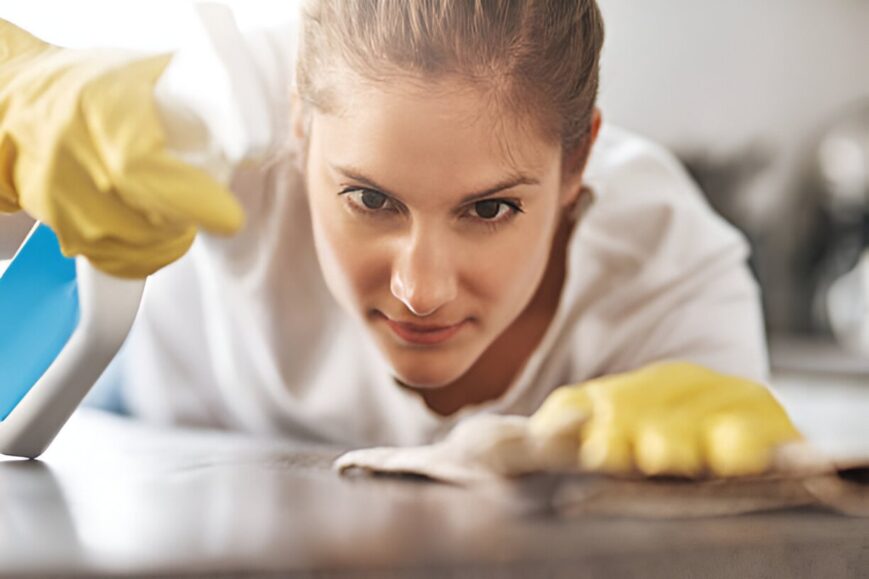Maintaining a clean and organized environment is essential for both physical health and mental well-being. Whether it’s your home, office, or communal area, upholding high standards of cleanliness ensures a healthier and more pleasant space for everyone. In addition to making an area look tidy, cleanliness reduces the risk of illness, increases productivity, and enhances the overall quality of life. But how can you achieve and sustain these high standards of cleanliness in your space?
In this guide, we will explore the best practices for maintaining cleanliness, from daily habits to specialized services. By incorporating these tips, you’ll create an environment that promotes hygiene and comfort.
One effective way to uphold high cleanliness standards in workplaces or larger spaces is by using professional hygiene services. These services offer expertise in maintaining a clean and safe environment, providing solutions tailored to your needs. While professional help is valuable, there are also several everyday strategies you can implement to ensure consistent cleanliness in any space.
Start with a Cleaning Plan
Achieving high standards of cleanliness requires more than just occasional tidying—it demands a structured approach. A cleaning plan helps you stay on top of your tasks and ensures no area is overlooked. By creating a cleaning schedule, you can divide tasks into manageable daily, weekly, and monthly routines.
Identify High-Traffic Areas
The first step in your cleaning plan is identifying high-traffic areas, as these tend to accumulate the most dirt and bacteria. In homes, high-traffic areas might include the kitchen, bathroom, and living room, while in offices, common spaces like reception areas, kitchens, and restrooms will need extra attention. Focus on these areas to ensure they’re cleaned and disinfected frequently.
Establish Daily, Weekly, and Monthly Tasks
Once you’ve identified the key areas, break down your cleaning tasks by frequency. For example:
- Daily Tasks: Wipe down counters, sanitize high-touch surfaces (like door handles and light switches), take out the trash, and sweep or vacuum common areas.
- Weekly Tasks: Mop floors, disinfect bathrooms, deep clean kitchen appliances, and dust surfaces.
- Monthly Tasks: Clean windows, organize storage spaces, and deep clean carpets or upholstery.
Having a structured plan ensures that cleaning becomes part of your regular routine, rather than a daunting task you put off until it becomes overwhelming.
Prioritize Clean Surfaces
Clean surfaces are key to maintaining a high standard of cleanliness, as they are the most visible parts of any space and can harbor germs. Regularly disinfecting surfaces prevents the buildup of bacteria, viruses, and allergens that can lead to illness.
Disinfect High-Touch Surfaces
High-touch surfaces, such as countertops, doorknobs, phones, keyboards, and remote controls, can quickly become contaminated with germs. Disinfect these surfaces daily, especially during cold and flu season, to minimize the risk of illness. Use a disinfectant that’s appropriate for the surface material—many all-purpose cleaners or disinfectant wipes work well for most areas.
Keep Countertops Clear
Cluttered countertops can make cleaning difficult and lead to the accumulation of dust and grime. Keep surfaces as clear as possible, especially in the kitchen and bathroom, where cleanliness is crucial. By minimizing clutter, you’ll make it easier to clean and ensure that your space always looks neat and organized.
Implement Effective Waste Management
Proper waste management is a fundamental aspect of cleanliness. Overflowing trash bins and improper waste disposal can lead to unpleasant odors and unsanitary conditions. Managing waste efficiently prevents these issues and contributes to a cleaner environment.
Use Properly Sized Bins
Make sure your trash bins are appropriately sized for the space. If bins are too small, they will fill up quickly, leading to overflow and potential spills. In high-traffic areas, such as kitchens or public restrooms, consider using larger bins or ensuring that trash is taken out multiple times a day.
Sort Waste Correctly
Recycling and composting not only benefit the environment but also help maintain a clean space. Create designated areas for different types of waste, including recyclables, compostables, and general waste. By sorting waste properly, you reduce the risk of contamination and make disposal easier.
Practice Proper Hygiene Habits
Cleanliness is not just about cleaning your space but also about practicing good hygiene habits that prevent dirt and germs from spreading. By encouraging proper hygiene practices, you help ensure that your space stays clean for longer.
Hand Washing
Regular hand washing is one of the most effective ways to prevent the spread of germs. Encourage hand washing after using the restroom, before handling food, and after touching high-traffic areas. In office or communal settings, make sure hand soap and paper towels are always stocked in restrooms and kitchens.
Shoe-Free Zones
Shoes track in dirt, bacteria, and allergens from outside. Consider making certain areas, such as living rooms and bedrooms, shoe-free zones to minimize the amount of dirt entering these spaces. Provide a designated area near the entrance where people can remove their shoes and store them neatly.
Use High-Quality Cleaning Products
The type of cleaning products you use plays a significant role in maintaining high cleanliness standards. Choosing effective, safe, and eco-friendly cleaning products ensures that your space is both clean and healthy for its occupants.
Opt for Eco-Friendly Cleaners
Many traditional cleaning products contain harsh chemicals that can harm the environment and irritate the skin and respiratory system. Opt for eco-friendly cleaning products that use natural ingredients and are non-toxic. Not only are these better for the environment, but they also make your space safer, especially if you have children or pets.
Choose Products Suited for Specific Surfaces
Using the right cleaning products for different surfaces ensures that you achieve optimal results without causing damage. For example, hardwood floors require a specific cleaner that won’t strip away the finish, while stainless steel appliances benefit from a cleaner designed to remove streaks. Always read product labels and follow the manufacturer’s instructions to avoid damage to your surfaces.
Maintain Air Quality
Clean air is often overlooked in discussions of cleanliness, but it’s just as important as clean surfaces. Good air quality reduces allergens, dust, and other airborne contaminants that can negatively affect health. Improving air quality keeps your space fresh and welcoming.
Regularly Change Air Filters
In spaces with HVAC systems, changing air filters regularly is key to maintaining good air quality. Filters trap dust, pollen, and other airborne particles, preventing them from circulating through your space. Depending on the type of filter, you may need to replace it every three months or more frequently if you have pets or live in an area with high pollution.
Use Air Purifiers
Air purifiers can be especially helpful in reducing allergens, dust, and odors in your home or office. Choose a purifier with a HEPA filter, which is effective at trapping small particles like pollen and pet dander. Place purifiers in high-traffic areas or rooms where you spend the most time to maximize their benefits.
Involve Everyone in Cleanliness Efforts
Maintaining high standards of cleanliness is easier when everyone shares the responsibility. Whether you’re at home with family or in an office setting, encouraging everyone to pitch in ensures that no one person is burdened with the task of keeping the space clean.
Set Clear Expectations
Establish clear expectations for cleanliness among all occupants. In shared spaces like offices, assign cleaning duties or encourage employees to clean up after themselves. In homes, create a chore schedule that rotates cleaning responsibilities among family members.
Reward Consistent Efforts
Positive reinforcement can help build good cleaning habits. Reward consistent efforts to keep the space clean, whether it’s a family movie night for keeping the house tidy or an office-wide reward for maintaining a clutter-free workspace.
Cleanliness is an Ongoing Commitment
Ensuring high standards of cleanliness requires both consistent effort and strategic planning. By creating a cleaning routine, practicing proper hygiene, and using the right products, you can maintain a space that is not only visually appealing but also safe and healthy. Whether you choose to handle everything on your own for additional support, maintaining cleanliness is a shared responsibility that benefits everyone in the space. By investing time and effort into cleanliness, you create an environment that fosters health, comfort, and productivity.
You May Also Like to Read: Exploring Decathlon Phulnakhar: Your Ultimate Sports Shopping Destination


